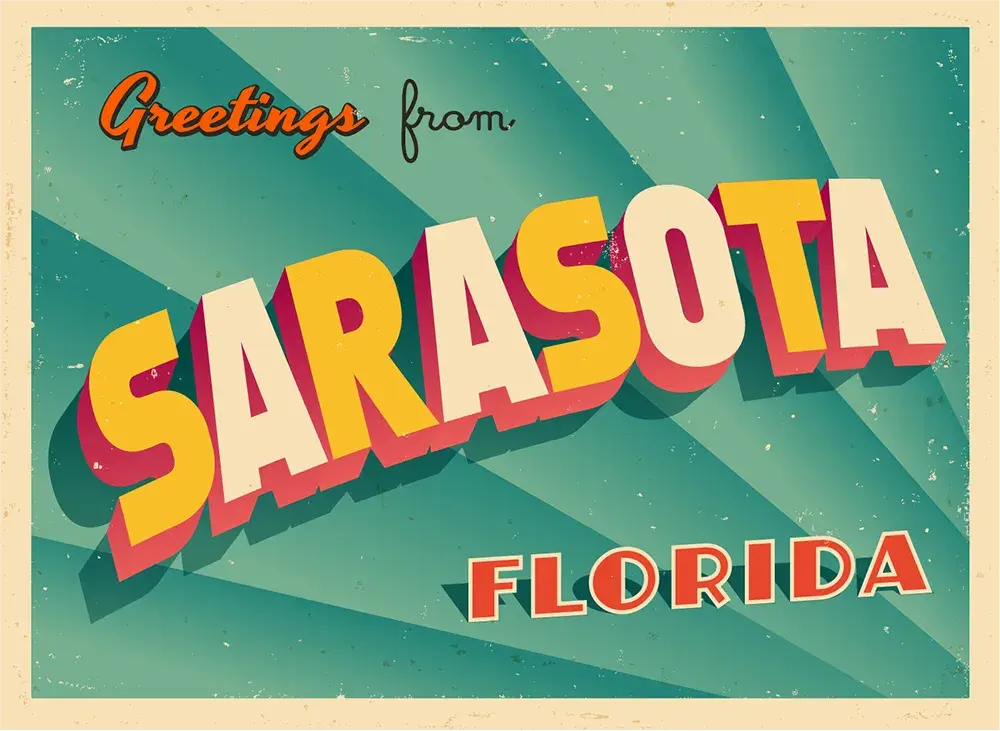History of Sarasota and Siesta Key
Sarasota was originally the home of native Americans who began settling the land more than 10,000 years ago. Spanish conquistadors first explored the greater Tampa area in the 1500s, and Sarasota was identified on early maps as Zara Sota, Zarazote, and Sarasota, as it is known today. With islands to shelter it from the Gulf of Mexico, the bay and its harbor were a haven for fishermen and marine traders.
Both Americans and Cubans set up fishing camps, or ranchos to trade fish and turtles with merchants from Havana. After the Battle of New Orleans in 1815, black and Seminole allies of the defeated British established farming communities in the area, and by 1823 many of the remaining Native Americans who had lived in the area were relocated to a reservation further inland.


In the early 20th century, landowners, businessmen, and socialites flocked to the area for its fishing, landscape, and beautiful beaches. One such land owner, Bertha Palmer, was the area’s largest landholder and developer, having purchased more than 90,000 acres after seeing an ad in a Chicago newspaper. She established the Sarasota area as an attractive destination for tourists and winter retreats for the wealthy.
The population grew rapidly during the Florida land boom in the 1920s and by 1926 it was one of the wealthiest counties in the country. In the wake of the Great Depression, the city relied on federal relief and local tourism to recover economically. Like much of the country, it wouldn’t experience major prosperity again until the late 1950s following World War II.
One of Sarasota’s barrier islands, Siesta Key, was attributed to one of Sarasota’s first Mayors, Harry Higel, who established the Siesta Land Company in 1907. However, the name was not officially recognized until 1952.
The first bridge connecting Siesta Key to the mainland was completed in 1917, making it much more accessible for visitors and beach enthusiasts. The bridge was replaced ten years later, and a second bridge was added at the southern end of the key.
Siesta Key sits just west of Sarasota and occupies only 2.4 square miles of land. Although small in area, the island boasts 8 miles of beautiful fine white sand and bright azure water. There are four main districts on Siesta Key, and three beaches: Siesta Beach, Crescent Beach, and Turtle Beach.
Following World War II, the Florida keys became desirable for residential development because of easy access to the mainland and ways to control mosquitoes. Siesta Key especially became a haven for local writers and artists.
With its picture-perfect sunsets and soothing breeze, it’s no wonder Siesta Key beach was voted in 2011 to have the best sand in the country. The beach has a unique type of sand, made of 99% pure quartz. The quartz helps the sand to stay cool, even on hot sunny days, helping your feet to stay cool as well. The quartz sand is unique to Siesta Key and probably unlike any sand you’ve ever experienced. Siesta Key was also named the #11 beach in the world by Trip Advisor’s 2020 Traveler’s Choice Awards.
The community includes single-family homes, condominiums, art galleries, shops, and restaurants. Siesta Key’s picturesque natural scenery and location serve as the perfect backdrop for local seafood restaurants and bars. In 1979, Captain Curts Village was opened as a landmark seafood restaurant on South Siesta Key. Serving the World’s Best Clam Chowder, it became known for its casual family fun atmosphere and great seafood, attracting visitors and locals alike. It’s a can’t-miss experience for anyone in the area.
Captain Curt’s Seafood Restaurant, Crab & Oyster Bar Siesta Key & Sarasota
Whether you’re visiting Siesta Key for the day, or you’ve lived here your whole life, you’ll love enjoying Captain Curt’s Crab and Oyster Bar, with a full bar offering, daiquiris, and; a live music venue, live entertainment, coffee shop, and souvenir shopping at the gift shop.
Captain Curt’s is committed to the customer experience. More than just dining, more than just a bar. We strive to ensure that every customer enjoys and remembers the time they spent there more than just the product they’ve purchased. The memories and the experience are what set us apart.


